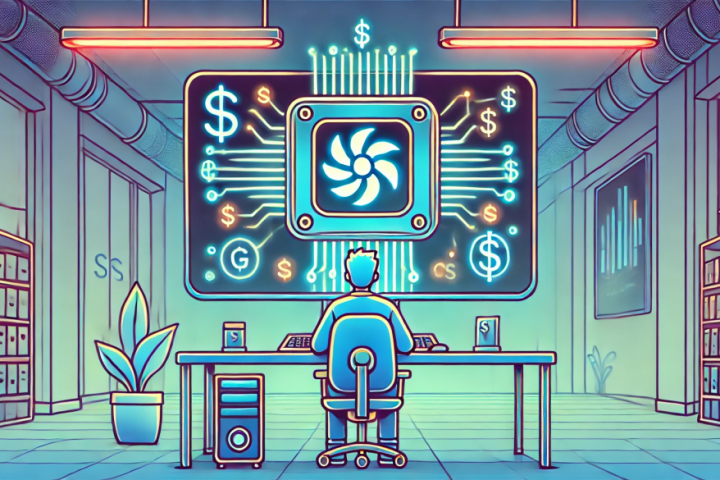Stay ahead of the curve with our daily and weekly newsletters, bringing you the latest updates and exclusive insights on the AI industry. Discover More
The emergence of generative artificial intelligence (AI) has been creating waves in the tech world. However, a recent study conducted by the Federal Reserve Bank of St. Louis, Vanderbilt University, and Harvard Kennedy School unveils the astonishing extent of generative AI’s integration into our daily work routines. The study, The Rapid Adoption of Generative AI, reveals that the technology has been adopted more rapidly than other groundbreaking technologies such as the personal computer (PC) or the internet.
Here are five unexpected findings from the study, which surveyed thousands of U.S. workers to assess the adoption of generative AI in both professional and personal settings.
1. Generative AI has outpaced PCs in terms of adoption at this stage
The spread of generative AI has surpassed all expectations. A mere two years after the public launch of ChatGPT, 39.4% of Americans aged 18-64 reported using generative AI, with 28% utilizing it in their workplaces. To put this into context, it took PCs three years to achieve a 20% adoption rate.
“Generative AI has been embraced more rapidly than PCs or the internet,” the researchers note. “This is primarily due to the quicker adoption of generative AI at home compared to the PC, likely due to differences in portability and cost.” The easy accessibility of tools like ChatGPT and Google Gemini has been instrumental in this accelerated adoption.

2. Generative AI is not just for tech workers—it’s for everyone
Contrary to the common assumption that generative AI is primarily used by software developers or data scientists, the research indicates that its adoption is widespread across various industries. Remarkably, one in five “blue-collar” workers—those in fields such as construction, installation, repair, and transportation—regularly use generative AI in their work.
“Generative AI adoption is most prevalent in management, business, and computer occupations, with usage rates exceeding 40%,” the study reports. “However, one in five ‘blue-collar’ workers and one in five workers without a college degree also regularly use generative AI in their jobs.”
This demonstrates that AI is no longer exclusive to high-skilled or specialized roles. From drafting reports to generating creative ideas, generative AI is being utilized in a surprisingly diverse range of tasks across various occupations.

3. AI adoption reflects the growing trend of workplace inequality
Similar to how the PC revolution led to increased workplace inequality, with computers augmenting the work of high-skilled workers while automating routine tasks, the adoption of generative AI could potentially intensify this trend. The study discovered that younger, more educated, and higher-income workers are more likely to use AI in their work.
Significantly, workers with a bachelor’s degree or higher are twice as likely to use AI compared to those without one (40% vs. 20%). The researchers caution that this could potentially worsen existing inequalities in the labor market.
“Generative AI usage is more prevalent among younger, more educated, and higher-income workers. This is significant because the PC revolution was followed by rising labor market inequality,” the authors observe.

4. AI is already a time-saver for a wide range of tasks
When it comes to specific tasks, workers are using generative AI for more than just coding or technical work. The most common uses of AI at work include writing, administrative tasks, and interpreting text or data. In fact, 57% of those using AI at work reported using it to assist with writing tasks, and 49% said they used it for information searching.
The researchers highlight that “usage rates at work exceeded 25% for all ten tasks in our list,” emphasizing just how broadly beneficial generative AI has become across job functions. Whether it’s summarizing reports or generating new ideas, AI is already saving employees a significant amount of time.

5. AI has the potential to enhance U.S. labor productivity, but it’s still early days
Perhaps the most thrilling finding of the study is that generative AI could significantly boost labor productivity. Based on current usage patterns, the researchers estimate that between 0.5% and 3.5% of all U.S. work hours are currently being assisted by generative AI. They further estimate that this could result in a labor productivity increase of between 0.125% and 0.875%.
“If we assume that generative AI increases task productivity by 25%—the median estimate across five randomized studies—this would translate to an increase in labor productivity of between 0.125 and 0.875 percentage points at current levels of usage,” the study explains.
However, the authors caution that these estimates are speculative, given the early adoption stage of generative AI. While the technology’s potential is immense, its long-term impact on the economy will depend on how deeply it becomes embedded in everyday workflows.








